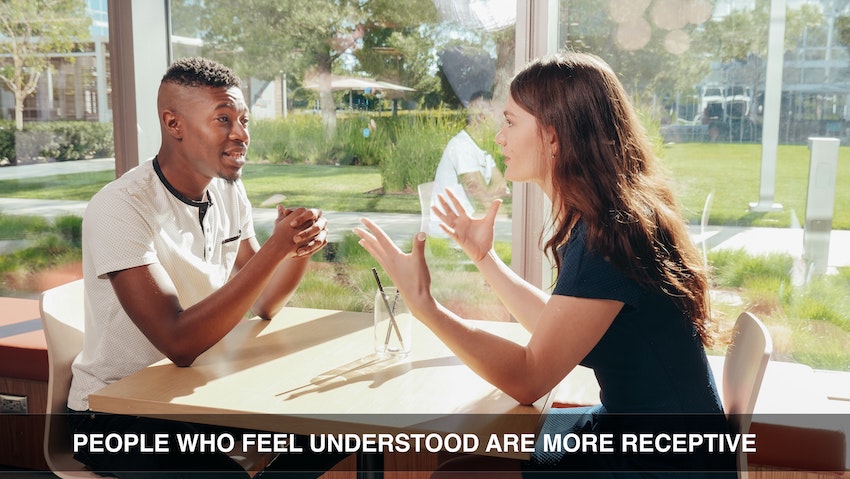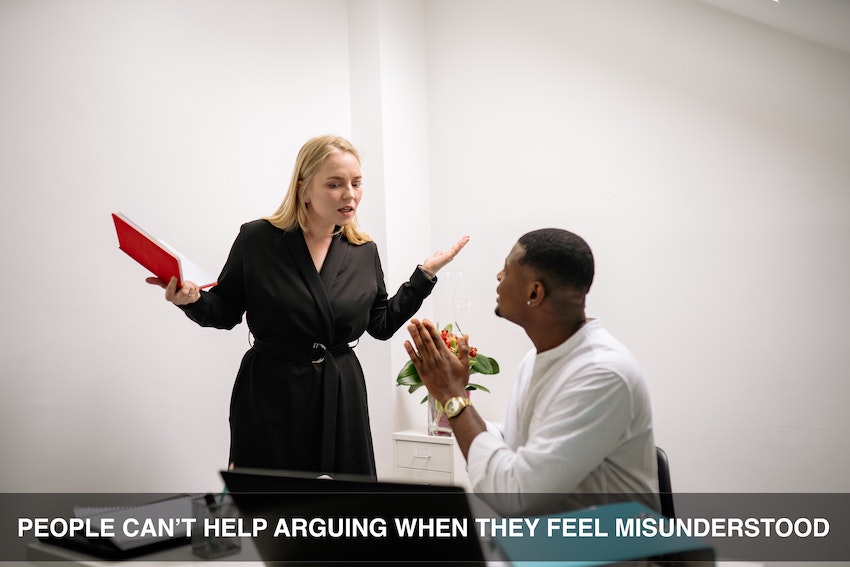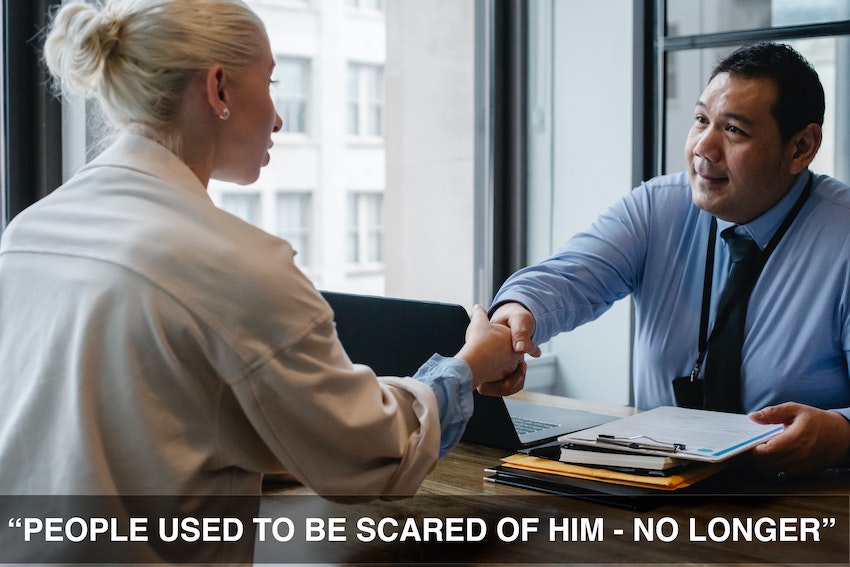Manage Conflicting Stakeholder Expectations
Learn To Overcome Stakeholder Conflicts
Refine your communication skills by learning to harness your emotional intelligence with one of the UK's most acclaimed management training courses.
Why Choose This Training?
More Than Just A Course Of Lectures
What gets in the way of developing and holding on to new communication skills are old habits of thinking and speaking. Even if the advice is very good the reason why it rarely sticks are the mental habits people inevitably revert to, especially under pressure.
Unlearning those old habits and internalising a more effective and lasting approach to communication needs more than a short course of lectures on how to do it.
What Makes This Training Stand Out?
What makes this training stand out is the exceptional support through one-to-one coaching sessions and continuous feedback. Changing behaviour is not an easy task as old habits are hard to break.
With a 40-year track record we can help you cultivate practical skills, and build your confidence to so you can successfully navigate real-world challenges, ensuring lasting behavioural improvements.
Testimonials
Join thousands of participants getting results
"What I love about this course is that I didn't just learn about the topic, this course is about ME. I'm confident I can reliably use my new skills, even when under pressure".
![]()
"A lesson for life! The power of effective communication is incredible when one masters the skills "listening with empathy" and "speaking assertively"
![]()
Clients We Have Worked With
Well-known companies who have used this course again and again, over many years
Course Summary
Training Objectives
Managing conflicting stakeholder expectations is a common headache for many project managers. A fact to ponder: successful projects often hinge on how well these expectations are aligned and managed.
This training course is designed to guide you through emotionally intelligent strategies, skills and techniques to navigate and resolve conflicts, ensuring smoother project execution. You’ll develop more peace of mind.
- Talking and listening to everyone helps solve conflicts. It is important to understand what each person wants.
- We need to find solutions that make as many people happy as possible. This might involve trade - offs.
- Using emotional intelligence is key. It means understanding feelings and working well with different people.
- Good planning can stop fights over resources like time or money.
- Keeping track of a plan’s progress helps fix any small issues early on.
Develop Your Emotional Intelligence
You will learn a set of powerful emotional intelligence communication techniques so that you can manage difficult conversations, handle challenging situations, build relationships and set firm boundaries.
Transferable Skills
The goal of this training is to equip you with the tools you need to build strong, lasting relationships in your professional life, although because these skills are so transferable many clients report vast improvements in their personal relationships as well.
Develop Skills
This is a skills development rather than just a theoretical programme, so the emphasis throughout will be on you taking turn after turn, practising your skills, while receiving feedback and coaching about your effect on others.
Repeated Practice and Feedback
In your coaching sessions you will be helped to practise dealing with the kinds of situation you find challenging, again and again, until you are confident you can do it successfully.
Video Analysis
We'll combine practical, hands-on experience with video replay and analysis and discussion of the principles involved to help you gain both skills and understanding. Special attention is paid to your individual training needs, so you can practise your skills in real-life situations that you have to handle at work.
Sustained Change
That's why as well as your place in a small group, this training includes a generous amount of private and confidential one-to-one coaching sessions online, spread over several months, ensuring an exceptional level of support. This will ensure the changes you make are sustained over a longer period of time and any obstacles are overcome. Choose between online training available worldwide, or in-person face-to-face courses in the UK.
Course Dates and Price
For a list of upcoming course dates (for online coaching and face-to-face training), the locations of the next 3-day public courses in the UK and pricing Click here.
Free Initial Session
This initial coaching session serves as an introduction to the "Skills with People" course, allowing you to understand the course's relevance and effectiveness for your specific needs before committing to it.

Understanding Stakeholder Conflict
Stakeholder conflict happens when people want different things. It can make projects tough to finish.
Causes of Stakeholder Conflict
Different people want different things. This simple truth can cause problems in projects. People involved, like the project team or senior management, may have their own ideas about what is best.
Sometimes these ideas do not match up. One group might think speeding up the work is key, while another worries about costs or safety.
Conflicts also happen because resources are limited. Money, time, and staff can only stretch so far. If two parts of a project both need the same thing at once, who gets it first? This question alone can lead to big disagreements.
Plus, outside pressures like legal rules or changes in the market add more stress to decision-making. Everyone has to deal with these pressures while trying to make the project a success.
Negative Effects on Project Success
Conflicting stakeholder expectations can lead to project delays. Projects often miss their deadlines because of disagreements on what needs doing and when. These conflicts also make it hard for teams to stay focused.
Changing demands pull the team in different directions, risking scope creep.
Trust between stakeholders and the project team may suffer too. As trust drops, so does teamwork. Without good teamwork, projects face more mistakes and less quality work. This situation makes managing stakeholder expectations harder as the project moves forward.
Keeping everyone happy becomes a big challenge, impacting overall success.

The Benefits of Conflict Resolution
Fixing conflicts brings teams closer and boosts happiness. It turns challenges into chances for growth.
Improved Collaboration
Solving stakeholder conflicts leads to better teamwork. Everyone starts working together, sharing ideas and feedback. It's like when parts of a machine move smoothly; the project runs better too.
Different people bring their skills and views to the table. This mix can spark new solutions that no one thought of before.
Teams with good collaboration keep everyone in the loop. They talk openly, trust each other, and respect different opinions. With these elements, projects face fewer surprises or delays.
People feel heard and valued, making it easier to tackle challenges together.
Increased Stakeholder Satisfaction
Happy stakeholders make the project world go round. When you manage conflicting expectations well, people involved feel heard and valued. They see the effort put into balancing their needs and interests.
This makes them more supportive of the project. Trust grows, making future cooperation easier.
Good communication plays a big role in keeping everyone on the same page. It helps to avoid misunderstandings and unrealistic expectations early on. By staying up to date with parties involved, you ensure that key stakeholders stay content throughout the process.
Satisfied stakeholders often mean smoother projects and better results for everyone.

Stakeholder Analysis
Stakeholder analysis helps us see who matters most in a project. It's like drawing a map to show where everyone stands, so we know how to keep things smooth.
Identifying Stakeholders
To manage conflicting stakeholder expectations, first, we must identify who the stakeholders are. They could be anyone from team members and customers to suppliers and sponsors. Each plays a critical role in the project's life.
It’s like making a guest list for a big event; you need to know everyone who should come.
Next step is figuring out their needs and how they influence the project. Some might have a lot of power and say in what happens, while others might not but still matter. Think of it as mapping out a strategy game where each player has different strengths and goals.
This process makes sure no important voice gets left out and helps in planning how to communicate with them effectively.
Identifying Potential Conflicts
Spotting conflicts early helps keep projects on track. Look at where people's goals clash or where there might not be enough resources to go around. Pay attention to different views and needs of stakeholders which could cause bumps down the road.
Talk with your team and other stakeholders often. This way, you can catch problems before they grow big. Keeping everyone in the loop makes managing expectations easier and builds good relationships.

Drivers of Stakeholder Conflict
Differing goals and limited resources often cause stakeholder conflicts. Throw in cultural differences and legal issues, and it's easy to see why tensions might rise.
Differing Objectives
People often have different goals. This can cause trouble in project management. For example, one person may want the work done fast, while another cares more about quality. These different objectives might clash.
It's a common reason why stakeholders disagree.
Managing these differing goals requires good planning and communication skills. A project manager must talk openly with everyone involved to understand their priorities. Finding a balance between speed and quality is key to keeping all parties happy and on track for success without causing delays or compromising the outcome of the project.
Resource Competition
Resource competition is about fighting over who gets what. Think of a pie. Everyone wants a piece, but there's only so much to go around. In projects, people often clash because they need the same stuff — time, money, or tools.
And yes, everyone thinks their part of the project is the top priority.
Managing these fights needs smart planning and clear talking. You must decide who really needs what first and make sure everyone knows why decisions are made. It's like being fair when sharing that pie — making certain each slice helps get the job done right.
Environmental Concerns
Environmental concerns play a big role in stakeholder conflict. Different groups care about the Earth and might not agree on how projects affect it. Some people worry about air and water getting dirty, while others are upset when trees are cut down or animals lose their homes.
All these worries can make it hard for a project to move ahead.
Projects that harm nature can turn stakeholders against each other. For example, building a new factory might create jobs but also pollute the river. Local folks might get mad because they fish there or use the water.
At the same time, business owners look forward to making more money from the factory. Finding common ground here is tough but key for success.
Economic Disparities
Economic disparities often cause stakeholder conflict in projects. This happens because people have different levels of wealth and resources. Some stakeholders might have lots of money and power, while others have less.
These differences can lead to disagreements on how a project should run or where to spend the budget.
This situation needs careful handling. Project managers must understand everyone's needs and find a fair way to meet them. Communicating effectively is key here; it helps build trust among all parties involved, ensuring that every voice gets heard despite the economic gaps.
Cultural and Social Impacts
Different cultures and social backgrounds can lead to conflicts among stakeholders. Each human being comes from a unique setting with its own values, beliefs, and ways of doing things.
When these differences meet in a project or organisation, misunderstanding and disagreements can occur. It becomes crucial for project management to understand these cultural and social dynamics.
This understanding helps in preventing conflicts.
Making sure everyone feels heard is vital for managing stakeholder expectations in diverse environments. Being mindful of the words we use and the actions we take goes a long way in building trust.
After all, effective communication is key, especially when dealing with people from various cultural backgrounds. Recognising these differences and working strategically towards common goals can turn potential conflicts into opportunities for growth and innovation within the company or project at hand.
Governance and Decision-Making
Making choices and leading projects are tough jobs. Leaders have to think about what everyone wants. This is where governance comes in. It's like a set of rules for making decisions that keep things fair.
Everyone knows who gets to say what happens next.
In any project, deciding who makes the call can lead to fights or agreements. Good leadership uses these rules to listen, choose wisely, and make sure the project does well. They aim to satisfy as many people as they can by finding middle ground when opinions clash.
This keeps the team focused and moving forward together.
Legal and Regulatory Issues
Legal and regulatory issues can be tricky in managing stakeholder expectations. Laws and rules change all the time. A project might start off following one set of rules, but then those rules may change.
This shift can upset some stakeholders who were counting on the old way. It's crucial to stay up-to-date with these changes to avoid surprises.
Staying legal is vital for any project's success, too. If a project breaks a law or ignores a regulation, it could face big problems. Fines or even having to stop the project could happen.
Keeping everyone informed about legal requirements helps keep the project moving smoothly and keeps stakeholders happy.
Health and Safety Concerns
Health and safety issues can cause big disputes between project stakeholders. They often come up because different groups have varied ideas about what is safe and what risks are okay to take.
For example, a building team might think certain safety steps slow them down too much, while the people who will work in the building once it's done want those steps in place to feel safe.
It's a tough situation. Everyone wants the project to finish on time, but no one wants accidents or health problems.
Dealing with these concerns needs clear communication and a solid plan that respects everyone's views. Finding a middle ground where safety does not get ignored and work continues smoothly is key.
Stakeholders must talk openly about their worries and work together to solve them—whether it involves changing parts of the project or finding new ways to keep everyone healthy and safe on site.
This way, projects move forward without putting anyone at risk.

Steps for Dealing with Stakeholder Conflicts using Emotional Intelligence
Handling stakeholder conflicts gracefully is a key skill. Using emotional intelligence opens the door to understanding and resolving these tensions effectively.
Acknowledge the conflict with Empathy
To handle stakeholder conflicts, start by showing empathy. See things from their point of view. This first step is key. It shows you care about their feelings and opinions.
Next, openly admit there's a conflict. Doing so isn't a sign of weakness – it’s smart and necessary for finding solutions. By acknowledging the issue with kindness and understanding, you pave the way for open communication and problem-solving together.
This approach is vital in any stakeholder management plan.
Gather information through communication
Gather information by talking and listening. It's a key step. Ask questions, listen to what people say, and note their views. This helps you understand everyone's needs and expectations.
By doing this, you can identify where conflicts might happen.
Communicate effectively to get advice and ideas from all involved. Use emails, meetings, or calls to collect details about the project and what each person thinks is important. This way, you make sure no one feels left out and that their concerns are heard right from the first day.
Analyse and prioritise issues
Figuring out which problems need attention first is like sorting out a puzzle. You put the most urgent pieces in place, so everything else can fit around them. This means looking closely at what's going wrong and deciding what to fix now and what can wait.
It’s a vital part of managing projects because it helps focus on the big issues that could slow things down.
To do this well, you need to gather all the facts. Then, start thinking about which problems could have the biggest impact on your project—and tackle those first. It makes sense, right? By focusing on these critical areas, you keep everything moving smoothly and avoid getting bogged down by smaller issues that might not matter as much in the long run.
Co-create potential solutions
Involving everyone in finding answers is a smart move. Sit down with all the parties and ask for their ideas on how to solve the problem. This makes them feel valued and part of the team.
The goal? To mix different views into solutions that work for everyone.
Use what you know about emotional intelligence here. Show empathy, listen well, and handle tough emotions smartly. This approach helps find ways to meet halfway, making sure no one feels left out or ignored.
It's all about building bridges between different needs and viewpoints, creating a path everyone can agree on.
Negotiate and agree on a solution
Talking and listening help find a middle ground everyone can live with. This means sitting down, sharing what each person wants, and understanding the trade-offs. It's not just about winning but finding a solution that respects everyone's needs.
By doing this, minds open up to new ideas that might be better than the first plan.
Putting the agreed idea into action is key. Everyone sees how their input made a difference, making them more likely to work together in the future. It turns out; talking things through doesn't just solve problems—it builds stronger teams ready to tackle the next challenge together.
Implement the solution
Put the chosen solution into action. This means making real changes in how things are done. Everyone involved should know their roles and what they need to do. Using easy-to-understand steps is key.
Make sure you have all you need before starting—people, money, and tools.
Keep an eye on how it's going from start to finish. If something isn't working right, be ready to make quick fixes. Keep talking with everyone involved to make sure things stay on track.
It's about getting results that match what was planned as closely as possible.
Follow up and monitor implementation
Keeping track of the plan's progress is key. You must check in regularly to see how things are going. This helps catch any small issues before they turn big. It shows if the solution is working or needs changes.
Talk to everyone involved often. Find out what's working and what's not from their view. This feedback is gold for making sure the project stays on track and meets everyone's needs.
Constantly adjusting based on what you learn keeps the team moving forward together.

Introduction to Emotional Intelligence (EQ) and Stakeholder Management
Getting to grips with EQ can totally change the game in handling stakeholder management — it's about understanding and working well with different people. Ready to find out how? Keep reading.
Understanding Stakeholder Perspectives through Self-awareness and Empathy
Self-awareness and empathy play big roles in seeing things from stakeholders' views. They help us understand how others feel and why they think the way they do. This understanding is key for good project management.
By putting ourselves in their shoes, we can see what worries them or what they hope to achieve. This makes it easier to find solutions that work well for everyone involved.
Using self-awareness means knowing our own feelings and reactions during discussions or meetings. It's like having a mental check-in with ourselves to stay calm and focused. Empathy lets us listen better and respond more kindly to concerns raised by stakeholders.
Together, these skills build trust and make teamwork smoother, leading to successful projects.
Using Self-regulation to Navigate Conflicts
Self-regulation is key in managing conflicts. It means controlling one's emotions and actions to handle situations better. This skill helps you stay calm, think clearly, and make good decisions during tough times.
Instead of reacting quickly with anger or frustration, take a step back. Breathe deeply. This moment allows you to assess the situation without making it worse.
By using self-regulation, you become more aware of your feelings and how they affect others. You learn to listen before speaking and understand before judging. These steps are crucial in finding solutions that work for everyone involved.
Also, remember that patience plays a big role here—it gives time for cooler heads to prevail and opens the door to effective communication among all parties.
Leveraging Motivation to Align Stakeholder Interests
Motivation plays a key role in bringing everyone on the same page. By understanding what drives each stakeholder, project managers can align their interests with the project's goals.
It's not just about finding common ground; it's about creating a shared vision that excites and motivates everyone involved. This way, even if stakeholders have different starting points, they see value in working together towards a shared objective.
Creating this alignment involves lots of talking and listening. Project managers must use their mind tools to identify what matters most to each person or group. Is it profits? Innovation? Or maybe making a positive impact? Once identified, these motivations can be used as leverage in discussions and decision-making processes.
By implementing strategies that address these key drivers, projects move forward more smoothly and successfully—everyone feels like they're part of something meaningful, leading to increased satisfaction across the board.
Enhancing Communication with Social Skills
Good social skills can make a big difference in dealing with project management methodology. They help us understand what others need and want. This is key in an organisation where people might not always agree.
With strong social skills, it becomes easier to talk things through and find common ground.
Talking well plays a huge part here. It's all about sharing thoughts clearly and listening to what others say. This way, even if there are trade-offs or bad ideas come up, everyone feels heard and respected.
Good communication keeps the team moving forward together, making sure no one is left out or misunderstood.
The Integral Role of EQ in Stakeholder Management
Handling stakeholder conflicts needs more than just facts and figures. It requires understanding and managing emotions well. Emotional intelligence (EQ) plays a key role here. With EQ, we can see things from others' points of view and handle tense conversations without making people upset.
This means using empathy to understand different concerns and self-regulation to keep our own reactions in check.
By tapping into what motivates us and those around us, we align everyone's interests better. Good social skills help smooth over rough spots in negotiations, leading to trade-offs that work for all human beings involved.
So, managing stakeholders isn't just about schedules or budgets; it's deeply about connecting with people on an emotional level to find common ground.

Balancing the Needs of Multiple Stakeholders
Finding the middle ground between what different people want is key. Want to know more? Keep reading!
Communicating Effectively
Talking well with each other helps balance what everyone wants and needs. It makes sure no one's ideas get lost. Often, we must trade off to find the best path for everyone. This means talking clearly and listening well.
Good talk helps solve problems before they grow big. It involves explaining things in simple ways that everyone can understand. By doing this, we all work better together and make sure the project succeeds.
It's like being part of a team where every player knows the game plan.
Negotiating and Compromising
Negotiating and compromising are key in balancing different stakeholder needs. You must talk and find middle ground where everyone gives a little to get a lot. This means understanding what each person really wants and finding ways to meet those needs while still reaching project goals.
It’s about trade-offs, deciding which battles to fight and which ones to let go for the greater good.
Think of it as making a deal that helps everybody win something. To do this well, you need good listening skills and the ability to suggest solutions that address various concerns.
It's not always easy, but finding that balance can lead to better results for all involved.
Managing Expectations
To manage expectations, clear communication is key. You have to let everyone know what can and can’t be done. This often means making trade-offs. It's about being honest about the limits of what you can deliver and when.
By setting realistic targets from the start, you reduce surprises later on.
Listening plays a big part too. Understand what stakeholders really want and why it matters to them. Sometimes, their true needs might be different from what they first say. Finding common ground helps balance different wants.
This keeps everyone moving in the same direction while respecting each other’s views.
Handling Difficult Situations
Handling tough spots needs a cool head and quick thinking. First, listen to what everyone has to say. This can truly show you where the problem lies. Then, think about trade-offs that might work for all sides.
It's like finding a middle ground where everyone gets something they want.
Next step is being clear and fair in your communication. Tell stakeholders what's possible and what's not in simple terms. Often, just knowing you understand their concerns can ease tension and lead to better solutions together.
Evaluating and Improving
Keeping track of how well we manage stakeholder expectations is key. It's like checking a map during a long trip to make sure we're still on the right path. By evaluating, we can see what's working and what's not.
This means looking at feedback from everyone involved and seeing if any trade-offs made were worth it.
Improving comes next. We take what we learned from evaluation and use it to do better next time. This could mean changing how we communicate or making new plans for sharing resources.
The goal is always to find better ways to satisfy everyone involved, without losing sight of the project’s main aims.

Leadership Development for Effective Stakeholder Management
Leadership skills can turn stakeholder conflicts into opportunities for growth. Keep reading to discover how.
Importance of Leadership in Conflicting Stakeholder Scenarios
Good leadership is key in managing stakeholder conflicts. Leaders must balance various needs and expectations, making tough trade-offs. They guide the team through disputes, aiming for a common goal.
Strong leaders listen to all sides, understanding different views. This helps find solutions that work well for everyone involved.
They also lead by example, showing how to deal with disagreements positively. A leader's calm approach during trouble can inspire others to act similarly. Clear communication from leaders keeps everyone informed about decisions and changes.
This reduces misunderstandings and builds trust among stakeholders.
Skills and Strategies for Managing Stakeholder Conflict
Leaders must have strong communication skills to deal with stakeholder conflict. They should listen carefully and understand different points of view. This helps in finding common ground among stakeholders.
It’s also crucial to stay calm and respectful, even when discussions get heated.
Compromise is another key strategy. Sometimes, leaders need to make trade-offs to satisfy everyone involved. By doing this, they can keep the project moving forward while keeping all parties reasonably happy.
Engaging stakeholders early and often in decision-making processes can prevent many conflicts from happening in the first place.

Manage Conflicting Stakeholder Expectations Conclusion
So, dealing with stakeholder conflicts isn't always easy. Yet, it's vital for project success. Emotional intelligence shines as a key player here. It helps us understand different views and work towards solutions together.
Keeping all sides happy might require trade-offs but leads to better outcomes in the end. Managing expectations and navigating through conflicts wisely can indeed turn challenges into opportunities for growth and innovation.

Manage Conflicting Stakeholder Expectations FAQs
1. What does it mean to manage conflicting stakeholder expectations?
It's like trying to keep everyone happy when they all want different things. Sometimes, you have to make trade-offs, choosing one thing over another, to find a balance that works for most people involved.
2. How do I identify what each stakeholder wants?
Start by talking with them! Ask questions, listen carefully, and note down what they say is important. It's a bit like being a detective – you're gathering clues to solve the puzzle of what everyone expects.
3. Can I please all stakeholders at once?
Honestly? It's tough—almost like juggling while riding a bike. You'll need to weigh up the pros and cons, making decisions on which expectations are must-haves and which ones can be adjusted or even dropped.
4. What if I can't find a solution that works for everyone?
That happens sometimes; it's part of the challenge. When you hit this spot, communicate openly about why certain decisions were made and how you tried to balance different needs. Transparency can help smooth things over even when not everyone gets exactly what they wanted.
5. How can I manage conflicting stakeholder expectations to ensure a successful project?
To manage conflicting stakeholder expectations and secure a successful project, it's strategic to understand each stakeholder's interests deeply. Expect to engage in strategic conversations that align these interests with the organization's goals. Remember, ignoring stakeholder interests is a bad idea; it can harm relationships and derail project success. Instead, develop relationships built on mutual respect and clear communication. This approach will harmonize expectations, enhancing the organization's strategic positioning and interest alignment, making it far from a bad idea but a pathway to a successful project outcome.






















